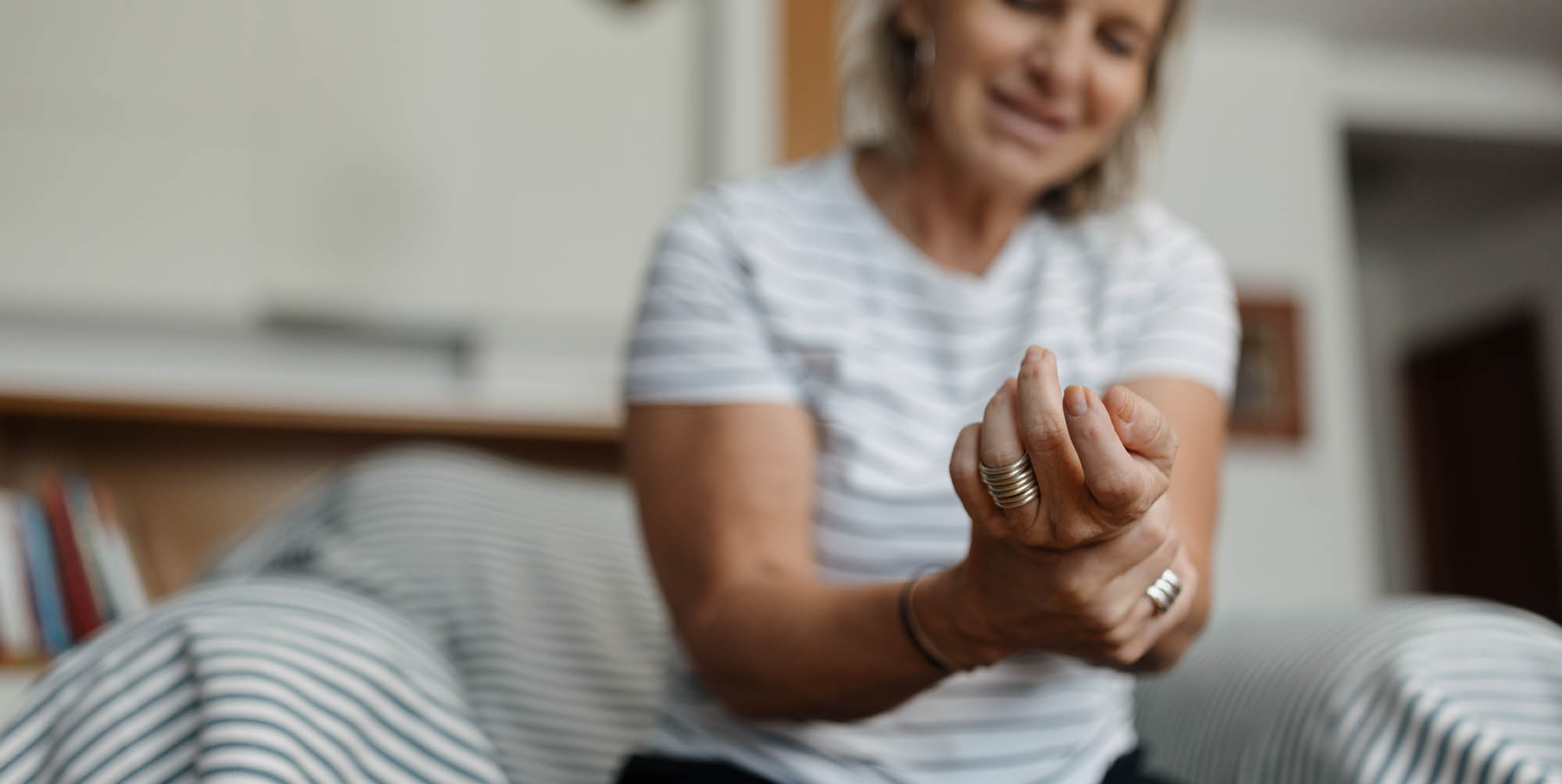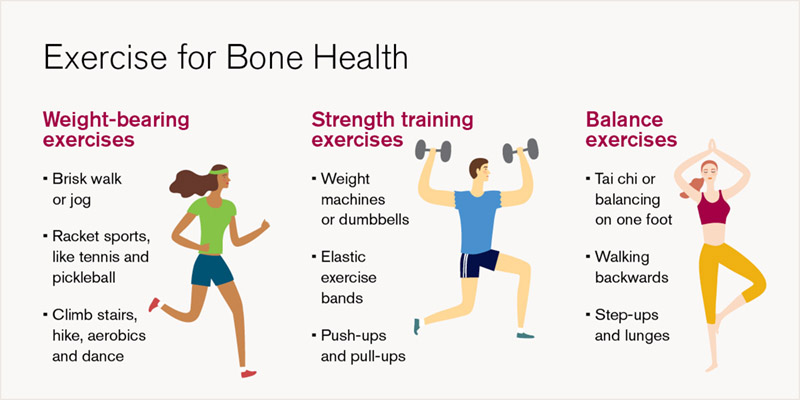7 Steps to Preventing Bone Fractures
October 10, 2024
Categories: Orthopaedics, Women's Health
Tags: Orthopaedics, bone health, bone fracture
 By Faith Laureen Mancol, PA-C, Orthopaedics
By Faith Laureen Mancol, PA-C, Orthopaedics
A fracture is the medical term for a broken bone, usually caused by traumatic events like falls, car accidents, and sport injuries. Some medical conditions can increase your risk for certain types of fractures. Fractures are common, occurring over 175 million times around the world every year.
While fractures can occur in individuals of all ages, it's more common in the elderly due to the weakening of their bones over time. Unfortunately, almost 50% of women and 35% of men over the age of 65 will suffer from a major fracture in their lifetime. One of the major risk factors for geriatric breaks is osteoporosis, a condition that increases the fragility of your bones and increases your risk for fractures.
"Due to the aging population in the United States, we are seeing an increase in both osteoporosis and fractures. Fortunately, there are steps people can take to prevent these "bone attacks" and improve the strength of their bones, no matter their age," says Faith Mancol, PA-C, physician assistant at Loyola Medicine and the Own the Bone program coordinator.
Connection between osteoporosis and fractures
If you were to compare a healthy bone and osteoporotic bone under a microscope, you would notice that the weakened bone is much more porous. Osteoporosis causes weakness by destroying the bone microarchitecture and creating larger holes, making the bone thinner and less dense. While your bones naturally lose some of their density and ability to regrow as you age, osteoporosis makes the bones much more fragile than what occurs simply from aging.
Unfortunately, osteoporosis is known as a "silent disease" because it doesn't usually present with symptoms. Many people don't know they have the disease until a break occurs, usually from a minor fall that normally wouldn't harm you. Roughly 10 million Americans have osteoporosis while another 44 million are at an increased risk. Thankfully, there are actions you can take today to decrease your fracture risk.
“After someone suffers from a fragility fracture, they typically do not consider that to be a significant medical event. However, they are five times more likely to fracture again within the same year, and it definitely impacts the patient's quality of life, independence and mobility," says Faith.
1. Consume enough calcium
Calcium is the building block of your bones. It's a mineral that your body needs to maintain density and strength in your bones and teeth. It also helps your muscles move, nerves carry messages, and blood vessels transport blood.
The adequate daily amount you should consume depends on your age and sex. Start with 1000 mg per day and then increase it depending on the recommendations from the NIH Office of Dietary Supplements. To put this number in perspective, 1 cup of low-fat dairy milk contains 25% of your daily calcium intake. Other foods rich in the mineral are tofu, yogurt, almond milk, canned sardines, canned salmon, and whole almonds.
2. Receive enough vitamin D
Vitamin D is an extremely important vitamin that helps improve the immune system and brain health, regulate inflammation, and other essential processes. It also helps the body absorb calcium into the blood stream and eventually strengthen bones. The recommended daily intake is 800 to 1000 IU for adults 50 and older.
Supplements are available and various vitamin-D fortified foods can be found, like milk and cereal. Spending time outside for a few minutes a day can also improve your levels, just don't forget your sunscreen.
“Vitamin D is essential not just for your bones, but for your overall health. It’s a simple yet effective way to help your body absorb calcium, reduce bone loss and maintain bone density as you age," says Faith.
3. Start lifting weights
Like your muscles, bones are made of living tissue. That means the more you work them, the stronger they get. Exercise plays a vital role in bone health by preventing weak bones, building muscle tone, and improving balance. Therefore, staying active prevents falls and becomes even more important the older you age.
By fighting against gravity during weight lifting or resistance exercises, you can improve the strength of your bones. However, don't go overboard! If you're at risk for fractures or had many breaks in the past, stick with low-impact exercises, such as stair climbing or hill walking.

4. Try to prevent falls
Perhaps the best way to prevent fractures is to not have falls in the first place. Of course, you can't control everything in your life. However, there are things you can do both inside and outside your home to reduce your chances of falling.
Outside your home
- Wear shoes that offer good traction.
- Watch for slippery or otherwise unstable floors.
- Check for curbs before stepping onto a street or sidewalk.
- In bad weather, use a cane or walker if you feel unstable.
Inside your home
- Use nightlights.
- Keep floors clear of clutter.
- Don’t walk around in socks or floppy slippers.
- Keep electrical cords out of the way.
- Use a rubber mat in the shower or tub.
5. Stop smoking
The negative effects of smoking are numerous. Tobacco is detrimental to the skeleton. It slows down bone formation, decreases calcium absorption, impairs vitamin D synthesis, and breaks down estrogen, which plays a vital role in maintaining bone density. This leads to an increased risk for osteoporosis and fractures.
If you're having trouble quitting, Loyola Medicine can provide tips or connect you with a physician.
“Smoking has far-reaching effects on your health, including weakening your bones. The chemicals in tobacco interfere with bone metabolism and reduce blood supply to your bones and other tissues, impairing the healing process, which is essential after a fracture or injury. Quitting smoking is one of the best things you can do for your bones and overall health," says Faith.
6. Limit your alcohol intake
While you don't have to stop drinking completely, limiting your alcohol intake can reduce your fracture risk. Drinking excessively can disrupt the body's ability to rebuild bone tissue, eventually leading to alcoholic bone disease.
The Centers for Disease Control and Prevention defines heavy drinking for women as 8 or more drinks per week and 15 or more drinks per week for men. However, there isn't a consensus on the safe weekly consumption of alcoholic drinks. In fact, consuming three to six drinks per week increases your risk for several types of cancer while seven or more drinks per week increases your risk of heart disease and stroke.
Most research indicates that two drinks or less per week is likely to avoid most alcohol-related health consequences, including fractures.
7. Speak with your doctor
If you're worried about your risk for bone fractures, speak with a health care professional. They can discuss your risk factors and possibly perform a bone mineral density test to help determine if you have osteoporosis.
Loyola Medicine takes the prevention of bone fractures seriously
At Loyola Medicine, we are committed to improving bone health and preventing fractures in patients. To this end, we have implemented a set of protocols known as Own the Bone. Developed by the American Orthopedic Association (AOA), this evidence-based, quality improvement program addresses the fragility fracture treatment gap. Fragility fractures, often resulting from osteoporosis, are a major public health concern affecting millions of Americans annually. This set of protocols aims to catch these fractures early and provide comprehensive care to prevent further fractures.
“Our goal with the implementation of the Own the Bone program in our Bone Health Clinic is to catch these fragility fractures and identify and treat the underlying cause to prevent future fractures. Osteoporosis is a major public health problem and a fracture is the first symptom. I am a big proponent of preventative care and believe incorporating Own the Bone will be part of the solution in reducing the number of fractures we treat by preventing them at the source, thereby enabling our patients to continue the activities they enjoy," says Faith.
Faith Laureen Mancol, PA-C, is a certified orthopedic physician assistant at Loyola Medicine, specializing in bone health. She earned her medical professional degree at the University of Saint Francis.
Book an appointment today by self-scheduling an in-person or virtual appointment using myLoyola.
